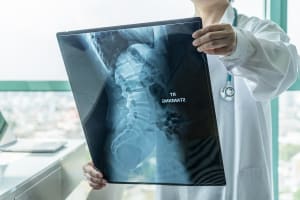Israeli-led scientific breakthrough could improve bone marrow transplant success rates

An Israeli-led international research team announced that it has successfully activated dormant bone marrow cells for transplants.
The team – consisting of Israeli, American and Canadian scientists – used the mRNA model to reactivate adult stem cells in mice. This technology made international headlines during the COVID-19 pandemic, when it was used for developing a vaccine.
The researchers believe the scientific breakthrough could dramatically improve the success rate for bone marrow transplants by assisting individuals who have undergone irradiation therapy or intensive chemotherapy.
Dr. Tomer Itkin from the Faculty of Medical and Health Sciences at Tel Aviv University and Sheba Medical Center, who led the international study, explained the complexity behind stem cell transplantation.
“Sometimes, even if a donor is a match for the person needing treatment, the donor doesn’t have enough stem cells for transplantation,” Itkin said.
“We’re the first in the world to show that we have a way to program activation of adult stem cells,” he revealed in an interview with the Times of Israel.
Bone marrow is the soft tissue found within bones, housing adult stem cells that continuously generate new blood cells essential for maintaining a healthy immune system.
Itkin noted that a current challenge lies in the fact that some bone marrow donors produce only "a very low yield of stem cells" that is insufficient for successful transplantation, he said.
While the supply is currently limited, a patient needs three million stem cells transplanted for each kilogram of his or her weight.
“You need huge numbers,” the Israeli lead scientist explained.
The scientific breakthrough came when the research team discovered that the key protein known as Fli-1 plays a central role in activating stem cells in the blood and immune system.
The Fli-1 protein “is actually a gene which is involved in leukemia,” Itkin explained. "Fli-1" stands for Friend of Leukemia, Initiating Factor One.
He noted that by applying a modified mRNA molecule model, the research team could “kick the cells into their activation state,” effectively “waking them up from their dormancy and to start being activated.”
“This new method significantly expands the available pool of stem cells for transplantation,” Itkin said. “Additionally, the method can be used to treat patients who have undergone multiple rounds of chemotherapy or genetic therapy and have an insufficient number of their own healthy stem cells.”
Itkin believes the team could receive FDA approval within five years and anticipates that the scientific breakthrough may pave the way for a range of additional applications.
“We showed it in the bone marrow,” he stated. “Now we’re thinking, okay, maybe we can also do it in the lungs, in the heart, in the brain, and many other tissues.”

The All Israel News Staff is a team of journalists in Israel.
You might also like to read this:















